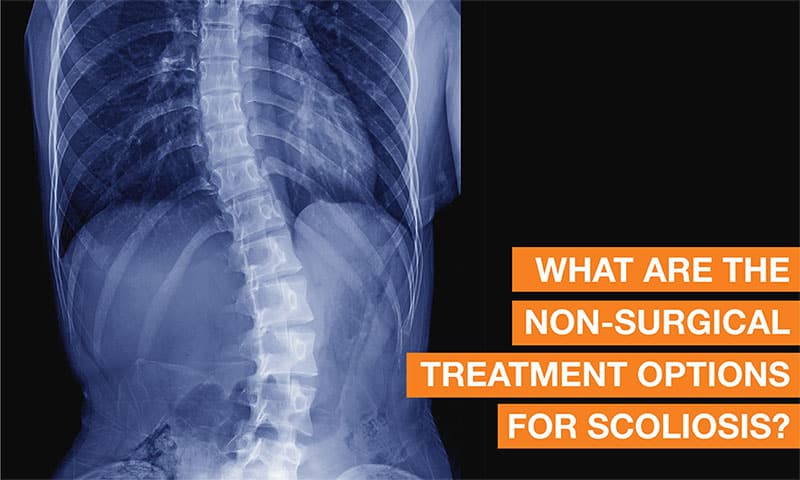Request Appointment
Enter your details and we will be in touch with you shortly;
Or call
8655885566
between 8 am and 8 pm.


Scoliosis is a condition characterized by an abnormal curvature of the spine, which can lead to pain, discomfort, and potential complications if left untreated. It can occur at any age, but it often develops during the growth spurt just before puberty. While the exact cause is still unknown in most cases, factors such as genetics, muscle imbalances, and neuromuscular conditions can contribute to its development. The curvature of the spine can vary from mild to severe, and it can affect the shape and function of your entire back, causing a significant impact on your life.
While surgery is often considered for severe cases, non-surgical treatment options can be effective in managing scoliosis and reducing symptoms. We will explore some alternative scoliosis therapies or nonsurgical treatment options in this article.
If you suspect you may have scoliosis, watch out for some common symptoms. These include an uneven waist or shoulders, a noticeable curve in the spine, one shoulder blade appearing more prominent than the other, or an asymmetrical appearance of the hips. You may also experience back pain, muscle stiffness, or fatigue, especially after long periods of sitting or standing.
If you notice any of these symptoms, it’s essential to consult with a healthcare professional who specializes in spine care. They will conduct a thorough examination, which may involve observing your posture, measuring your spinal curve using X-rays, and evaluating your overall health. This comprehensive assessment will help determine the best course of action for your specific situation.
Non-surgical treatment options can be effective in managing this condition, especially for mild to moderate cases or individuals who are not surgical candidates. Each treatment option has its own benefits and considerations, and it is crucial to consult with a healthcare professional experienced in scoliosis management to determine the most appropriate approach for an individual’s specific condition. With proper care and diligent adherence to non-invasive treatments, individuals with scoliosis can experience improved symptoms, enhanced quality of life, and better long-term outcomes.
In cases where the scoliotic curve is mild or not progressing rapidly, observation and regular monitoring by a healthcare professional may be recommended. This approach is often adopted for children and adolescents who are still growing, as the curve may stabilize or improve naturally over time.
Physical therapy plays a crucial role in non-surgical treatment of this condition. A personalized treatment program can help strengthen and stretch the muscles surrounding the spine. These movements can help improve posture, increase flexibility, and reduce pain associated with scoliosis. Physical therapy can also provide education on proper body mechanics and posture, helping patients manage their condition effectively.
Bracing is commonly prescribed for children and adolescents with moderate scoliosis curves that are still progressing. The goal of bracing is to prevent further curvature progression and provide support to the spine. Various types of braces may be recommended depending on the individual’s specific needs. Bracing requires consistent wear for several hours a day or overnight and should be closely monitored by a healthcare professional.
Managing pain is an essential aspect of scoliosis treatment. Non-surgical pain management options include pain medications, heat or cold therapy, massage therapy, and acupuncture. These techniques can provide temporary relief from pain and muscle tension associated with this condition.
Pilates and yoga exercises can be beneficial for individuals with scoliosis by improving core strength, flexibility, and posture. These low-impact exercises focus on controlled movements and breathing techniques, which can help reduce muscle imbalances and enhance spinal alignment. It is, however, important to work with an instructor who is experienced in adapting exercises to the needs of individuals with scoliosis.
Living with scoliosis doesn’t mean giving up on your dreams or a pain-free life. With the right approach and professional guidance, you can manage your condition, improve your posture, alleviate discomfort, and regain control over your life.
If you are struggling with scoliosis, take the first step towards a healthier spine today. Consult a healthcare professional and explore the non-surgical scoliosis therapies available to you.
Begin your journey to a happy and healthy life today. Call QI Spine 086558 85566 and reserve your first consultation with our expert spine specialists, free of charge.
Visit our nearest clinic for your first consultation